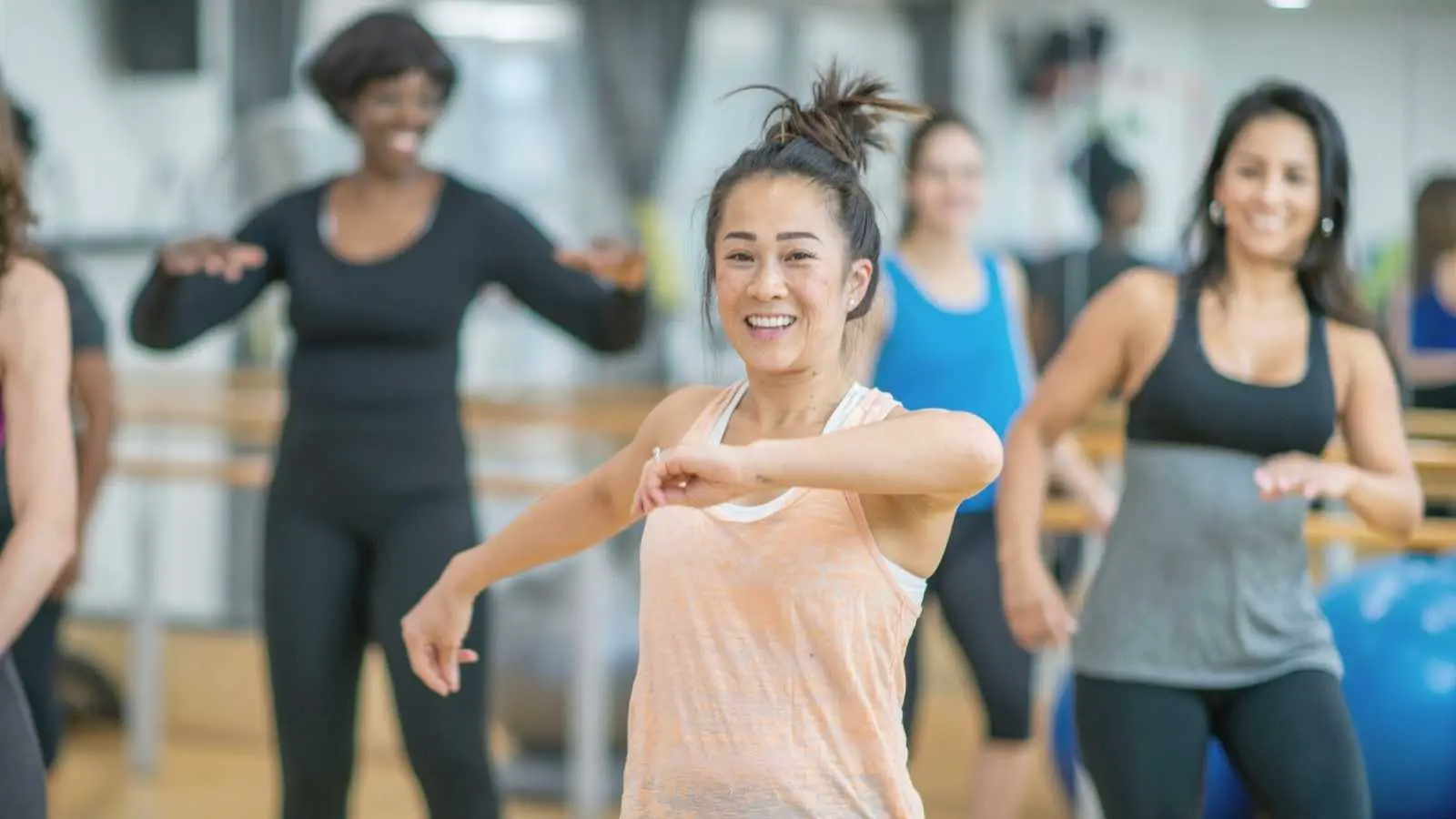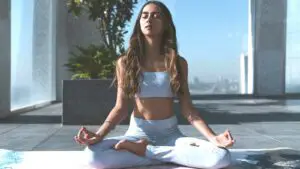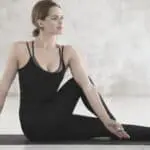The universal understanding of meditation is a practice that involves sitting in silence and stillness to calm the mind and nervous system. However, you may not know that there are some meditations, known as dynamic (or active) meditations, which are totally different from the traditional form.
Dynamic meditation is a meditative practice involving physical movement and rapid breathing. Active meditation has additional benefits to the traditional style, such as breaking conditioned patterns in the body-mind.
If you struggle to sit in silence and switch off your thoughts, you might find active meditation more beneficial. Moreover, if you’re a long-term meditator, you’ll surely be interested in learning about these alternative styles.
Where Does Dynamic Meditation Originate From?
Dynamic meditation is a relatively new style, developed in the 1970s by Indian spiritual leader Osho. After a long period of experimentation, Osho invented the trademark hour-long OSHO Dynamic Meditation, which consists of different stages involving rapid breathing, wild movements, and shouting.
Shortly after, Osho developed several other active forms of meditations, all with unique methods and purposes. Osho believed that meditation should be part of daily life, not only performed in a quiet and still position.
Moreover, he understood that finding inner and outer stillness is difficult for many people. According to Osho, you can create peace within without making the physical body still. Therefore, he developed a dynamic meditation that is natural and spontaneous and, thus, is more beneficial for modern-day people.
The Difference Between Dynamic And Seated Meditation
Of course, the most apparent difference between active and still meditations is the use of movement in the former. Dynamic meditation is about purposely creating a chaotic and disorderly external state to deal with and heal the emotional and mental chaos we feel inside.
The purpose of seated meditation is essentially the opposite. It is about bringing the physical body into stillness and creating calm in the external environment to find inner serenity.
Active meditations do involve a period of stillness at the end, though. This is done to let the effects settle in the body. Moreover, it is easier to make the body still after dynamic movement.
Aside from the contrasting purpose between dynamic and seated meditation, there are other key differences.
Dynamic meditation incorporates rapid breathing
One of the most common types of meditation is breath awareness, which means observing the natural rate of breathing and the movement it creates in the body. Dynamic meditation uses rapid or forceful breathing techniques; thus, you change the breathing rather than observe it.
Dynamic meditation uses various forms of vocal expression
While seated, Mantra meditation involves repetitive chanting to calm the mind and still the thoughts. In dynamic meditation, you express yourself vocally in a different way. For example, you use your vocal box by humming in an active Nadabrahma meditation created by Osho.
Furthermore, in the OSHO dynamic meditation, you shout, not chant the “Hoo” mantra while jumping up and down. There is also a stage for free expression where you can scream, sing or make any noise you want.
Dynamic meditation is easier for beginners
Traditional meditation might not work for everyone. It can be highly challenging for some people who just began the journey of meditation to find stillness in the body and mind. OSHO Dynamic Meditation, however, is based on the concept of Katharsis, which means to purge hidden or long-suppressed emotions through dramatic expression.
This helps purify the mind and bring a person into a more relaxed state. Therefore after just a few weeks of dynamic meditation practice, most beginners find it much easier to sit in silence during traditional seated meditations.
Benefits Of Active Meditation
Because active meditation is so different from seated meditation, you may think that the benefits of the practices are contrasting. However, despite the movements and noises, dynamic meditation is still a meditative practice; thus, it shares many of the same benefits as the traditional seated practice:
- Moves stagnant energy
- Reduces stress
- Slows down mental activity to improve clarity and focus
- Improves quality of sleep
- Boosts your mood and energy levels
- Helps you become aware of physical tension, emotions, and recurring thoughts.
Aside from these benefits, active meditations offer some additional advantages.
The freedom to express yourself in any way
In the five-stage OSHO Dynamic Meditation, you can make any noise or movement. It is essentially an opportunity to have an adult temper tantrum. So if you ever wish you could scream to release your emotions, dynamic meditation serves that purpose.
You don’t need to think about what you are doing. The purpose is to allow whatever spontaneous movements and noises come up. This will enable you to fully let go without holding anything back, something we cannot do much in modern-day society.
A quicker way to release stuck emotions
All styles of meditation help to bring up deep-rooted emotions and release them. In seated meditation, the stillness and silence help bring up emotional stress. Then by observing and allowing these feelings to arise, you can break free from the energy they carry.
However, many people struggle to find a state of stillness for emotions to arise; thus, releasing negative emotional states can take some time. OSHO Dynamic Meditation is scientifically designed to break ingrained emotional patterns, so it can be a quicker way to do this.
Increased lung capacity
The rapid breathwork you do in some Osho active meditations is excellent for strengthening the lungs. In the beginning, you might find it challenging to keep up with the guided breathwork stage and even feel lightheaded. However, this is normal as we are not used to breathing deeply into the lower lungs practiced in this meditation.
Over time, you’ll notice breathwork becomes more manageable as your lung capacity increases, allowing you to take in more oxygen and release more carbon dioxide. This will keep your lungs healthy, reduce infections and prevent you from getting out of breath when exercising.
Types Of Active Meditations
As previously mentioned, there are various kinds of active meditations, and some are more well-known than others. Let’s take a look at the five most popular Osho meditations and how to practice them at home.
OSHO Dynamic Meditation
The OSHO Dynamic Meditation is the original and most practiced active meditation worldwide. The meditation lasts one hour and consists of five stages.
Stage 1 (10 minutes): Breath rapidly through the noise, focusing solely on a forceful exhalation. The inhale will be natural.
Stage 2 (10 minutes): Freestyle expression. Make any movements or noises that your body desires.
Stage 3 (10 minutes): Jump up and down with arms overhead, shouting the mantra, “Hoo!”
Stage 4 (15 minutes): Total stillness. Freeze your entire body, letting the effects of the previous stages take place.
Stage 5 (15 minutes): Celebration: Dance freely to the upbeat movement.
It is recommended to do this dynamic meditation early in the morning as you are more conscious and alert. In addition, you should aim to keep your eyes closed throughout to stay connected with your inner being.
Kundalini Meditation
OSHO Kundalini Meditation involves shaking, dancing, and stillness. Practicing this meditation around sunset is recommended as it helps you unwind and prepare for sleep. It lasts for 1 hour and consists of 4 stages.
Stage 1 (15 minutes): Freestyle full-body shaking with your eyes open or closed.
Stage 2 (15 minutes): Dance in any way your body wishes.
Stage 3 (15 minutes): Sit or stand in stillness with your eyes closed.
Stage 4 (15 minutes): Lie down in stillness with your eyes closed.
Nadabrahma
OSHO Nadabrahma Meditation uses humming and hand movements to create harmony in the body and mind. It lasts 1 hour and consists of 3 stages.
Stage 1 (30 minutes): Humming. In a seated position, hum loudly but naturally with your eyes closed and lips together to create vibrations throughout the body.
Stage 2 (15 minutes): Hand movements. This stage is divided into two. For the first 7.5 minutes, move your hands in an outward circular motion with the palms facing up. Do this as slowly as possible and visualize yourself giving energy to the universe. For the second 7.5 minutes, turn your palms down and move them in a circular motion in the opposite direction. This time visualize yourself taking energy in.
Stage 3 (15 minutes): Stillness. Stop the hand movements and sit in stillness and silence.
Nataraj Meditation
OSHO Nataraj Meditation combines dancing and stillness. It lasts 65 minutes and has three stages.
Stage 1 (40 minutes): Dancing. Close your eyes and dance like you are possessed unconsciously and naturally.
Stage 2 (20 minutes): Lie down in stillness with your eyes closed.
Stage 3 (5 minutes): Final celebration as you dance to the upbeat music.
Chakra Breathing Meditation
OSHO Chakra Breathing Meditation uses deep rapid breathing and body movements to stimulate the chakras (the energetic centers). You can do it at any time, but it’s best done on an empty stomach. This meditation lasts one hour, with two stages.
Stage 1 (45 minutes): In a relaxed, standing position, breathe deeply in a fast but comfortable rhythm into each chakra, starting with the root chakra at the base of the spine. When you hear the bell, move your attention up to the next chakra, increasing the speed of your breath slightly each time. After you finish at the crown chakra, slowly draw your awareness back down to the other 6 chakras, stopping to breathe slowly into each one a few times. Complete this sequence three times (each one lasts around 15 minutes).
Stage 2 (15 minutes): Sit down in a still, relaxed position as you feel the energetic effects move throughout the body.
Practicing Dynamic Meditation: Tips For Beginners
As dynamic meditation is very different from the traditional style you may be used to, it’s natural to feel unsure about it at first. Furthermore, it may take a few weeks to get used to it and start to experience the benefits, so be patient.
Each active meditation is very different from the others. So if you try one and do not like it, don’t write them all off. Chances are, you’ll find at least one you enjoy, so give them all a go.
Here are some more tips to help you have the best experience.
- Unlike some seated meditations, you should meditate with music when practicing these dynamic styles. Each OSHO meditation has specific music that accompanies it. They are curated to indicate and support each stage, and you can access them on the Osho website. When the meditation is over, you will hear three gong bells.
- It’s best to practice any Osho active meditation in a group for the first few times to help you get used to it. Once you know the method and stages, you can practice it independently but be sure not to omit any of the steps.
- Because of the spontaneous expression involved in these meditations, it is easy to get lost in the flow. Still, remain the witness throughout by staying conscious of what is going on in your body and mind.
- In the stillness stages that follow the dynamic movement and breathing, you will likely feel vibrations and energy throughout your body, particularly around the hands. This is normal as both movement and breathwork help you connect more with your life force.
- If you feel dizzy, stop and take long, deep breaths. Lightheadedness is normal when you first start dynamic meditation. However, drinking plenty of water before beginning the meditation may reduce the likelihood or severity.
Final Thoughts On Dynamic Meditation
Dynamic meditations offer an alternative way to enter a meditative state. They are ideal for people who fidget or struggle to calm their minds when sitting quietly. Still, even if you have a traditional meditation practice, why not consider incorporating active meditation into your routine and enjoy the additional benefits?








